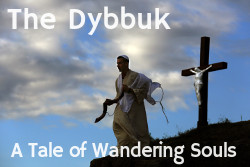|
In the film about the outstanding director and theoretician appears his brother – professor Kazimierz Grotowski – and his friends and collaborators, among others Georges Banu, Eugenio Barba, Peter Brook, Ludwik Flaszen, Maja Komorowska, Raymonde Temkine, and Anatolij Vasiliev. The filming locations were Europe and India. Some unique archival footage was used.
Filming of the documentary by Maria Zmarz-Koczanowicz „Jerzy Grotowski – an Attempt at a Portrait” has started in Wrocław. The script was written by professor Zbigniew Osiński. The film produced by Krzysztof Kopczyński’s company Eureka Media is financed by television channels TVP 2 and ARTE. Film creators are wishing to present Grotowski not only as a professional but also as a private person. In his case it is hard to separate his life from his work. His personal experiences, meetings with people and visiting of particular places are the things that have influenced the shape of his artistic path and have become the material of his works. The film is supposed to be a compilation of conversations with people, who were accompanying Grotowski as his friends and collaborators, among them Ludwik Flaszen, Kazimierz Grotowski (Jerzy’s brother), Jerzy Gurawski, Maja Komorowska, Rena Mirecka and Zygmunt Molik. They will talk about the events in his life and the works of the famous director. The producers will visit places with which Grotowski was connected: Rzeszów – the place of his birth, village Nienadówka – where he had spent the time of Nazi occupation, Opole and Wrocław – the cities of his mature art. Other filming locations are Italy, France, USA and India. Grotowski had traveled a lot – says producer Krzysztof Kopczyński. – India was of great importance to him, because that’s where he encountered various elements of its culture. On the slopes of the holy hill Arunachala near Madras Grotowski’s ashes were spilled after his death. The hill won’t be featured in the film, because Grotowski had asked before his death not to show this place particularly important to him. Nevertheless other hills will be shown, e.g. Ashram of Ramana Maharshi. We will speak with director André Gregory, French author of one of the first books about Grotowski, and also with Raymonde Temkine, Anatolij Vasiliev and Eugenio Barba. We will of course visit Pontedera where Grotowski had spent the last years of his life in the centre which he managed together with Thomas Richards. We are hoping to have the film finished before 14th January 2000 so it could be shown on that day, which is the first anniversary of Jerzy Grotowski’s death.
"Rzeczpospolita", 17th September 1999
”I am a former stager, former director and now I don’t know how to call myself, a man of a paratheatrical adventure. If we get to know this domain and we will be threatened by knowledge and reproduction, there’s no doubt that we will enter another one...” that is what Jerzy Grotowski once said about himself and his collaborators. Theatrical artist and director, researcher and stage art reformer, founder of Teatr Laboratorium died last year. He was a very active and versatile artist, always in search of something. Documentary by Maria Zmarz-Koczanowicz is an attempt to portray this amazing artist and human being. Memories of people, who knew him, archival pictures and journey to places important to Grotowski, recordings of stage performances and interviews with him – from such fragments the makers of the film try to compose a story and discover at least a part of the truth about this fascinating artist and human being, whose work remains an inspiration and life – a mystery. It is also an attempt at bringing closer to a wider audience his work, which for the contemporary world theatre has become a huge reformist discovery and from which, paradoxically, polish theatre draws the least.
"Antena" No. 5, 31 January 2000
”Jerzy Grotowski – an Attempt at a Portrait”. – He wanted impossible – says Ludwik Flaszen, co-founder of Teatr Laboratorium. – He was searching for a theatre that wouldn’t be theatre, for an actor who wouldn’t act and for a spectator who wouldn’t be a spectator. When they met in Opole he was a slightly obese young man in an impeccable suit and matching tie. His eyes were hidden behind dark sunglasses. A graduate from the acting and directing department of the Kraków Theatre Academy (PWST) he started his reforms in the theatre in Opole. He established an acting method that would relate to the archetypical behavior. The performances staged in Teatr 13 Rzędów (The Theatre of 13 Rows) gained him publicity, and he won fame by theatrical productions full of expression, although ascetic in form, that he had made for Teatr Laboratorium in Wrocław, e.g. famous "Apocalypis cum figuris'' from 1969. Everyday his actors would have even 6 hour long movement and dance rehearsals, Grotowski was present at all the rehearsals and shows. He didn’t separate the hours of work from those of rest – recall his collaborators in Maria Zmarz-Kaczanowicz film based on the script by Zbigniew Osiński. World career of Jerzy Grotowski’s theatre was launched in 1966 since than he had been for the first time allowed to go abroad for guest performances in France with his show „Książę Niezłomny” (The Constant Prince). Grotowski was admired by famous artists, and many of them offered him their friendship, but he had always kept distance. – We never got to be on first-name terms with each other – recalls Peter Brook. After 1981 Jerzy Grotowski left Poland, and 1984 he closed down his theatre. – What he was really interested in was the life and the human being. He needed the theatre only for a certain period time – guesses actress Maja Komorowska. Despite that, he still worked and lectured in the USA, France and Italy. In 1997 he became professor at College de France at the specially established for him department of theatrical anthropology. By then he was already critically ill. He died two years later in Pontedera.
"Rzeczpospolita" No. 5, 4th-10th February 2000
"Saint Grotowski"
Watching the film by Maria Zmarz-Koczanowicz about Jerzy Grotowski one unconsciously holds his breath. In one of the first sequences of the film the brother of the director tells the story of their war wandering. During the Nazi bombing their mother had covered them with her own body. Both have kept in their memories the beating of her heart. And then the camera finds the house in which they put up. An old woman – probably Grotowski’s peer – puts on the bench in front of the house holy paintings of Mother of God and Jesus with the burning heart. Close-up. A voice from the off says: „By these paintings they used to pray then”. And we are looking at this naïve image of God not only as at a scene from "Apocalypsis cum figuris''. Emotions of a little boy from before 60 years ago become our emotions. The director, together with the scriptwriter Zbigniew Osiński has reached to almost all the most important people in Grotowski’s life: friends, collaborators, researchers. At the same time a balance of the variety of keys of those stories has been achieved. Jerzy Gurawski burst out laughing while recalling one of the episodes. The translator of Grotowski’s texts from Pontedera is unable to bring out her voice when she speaks about last months of his life. Eugenio Barba is mad at Grotowski for accepting the offer of lecturing at College de France. Anatolij Vasiliev is looking for mystical excuses for the date of death of his master. Jerzy Grotowski had many faces. Professor Pimko – flexible politician able, for the sake of saving his theatre, to perform for the communistic party. Director – a monk, who pledged purity and poverty. Prophet and guru meeting individually with hundreds of young people. Maria Zmarz-Koczanowicz didn’t plan to create a hagiography, but what she has achieved is a story about suffering, Grotowski’s struggle with his own body, psyche and personality transformations. A path to illumination. On one of the pictures used in the film the director-pilgrim is sitting on some stairs. He took of his glasses and closed his eyes and a little boy is combing his hair. A lot of Grotowski-human being is present here and lot less of Grotowski-theatre reformer. His archival comments are restricted to minimum and not much of a performance fragments have been used as well. And such proportion is justified. The ideas get older, revolutions get wasted, and students go away. What’s left? An example of an artist’s attitude towards the world, people and own works.
Łukasz Drewniak, "Tygodnik Powszechny" No. 5, 30th January 2002
|



















